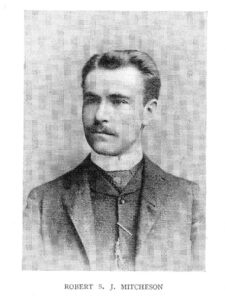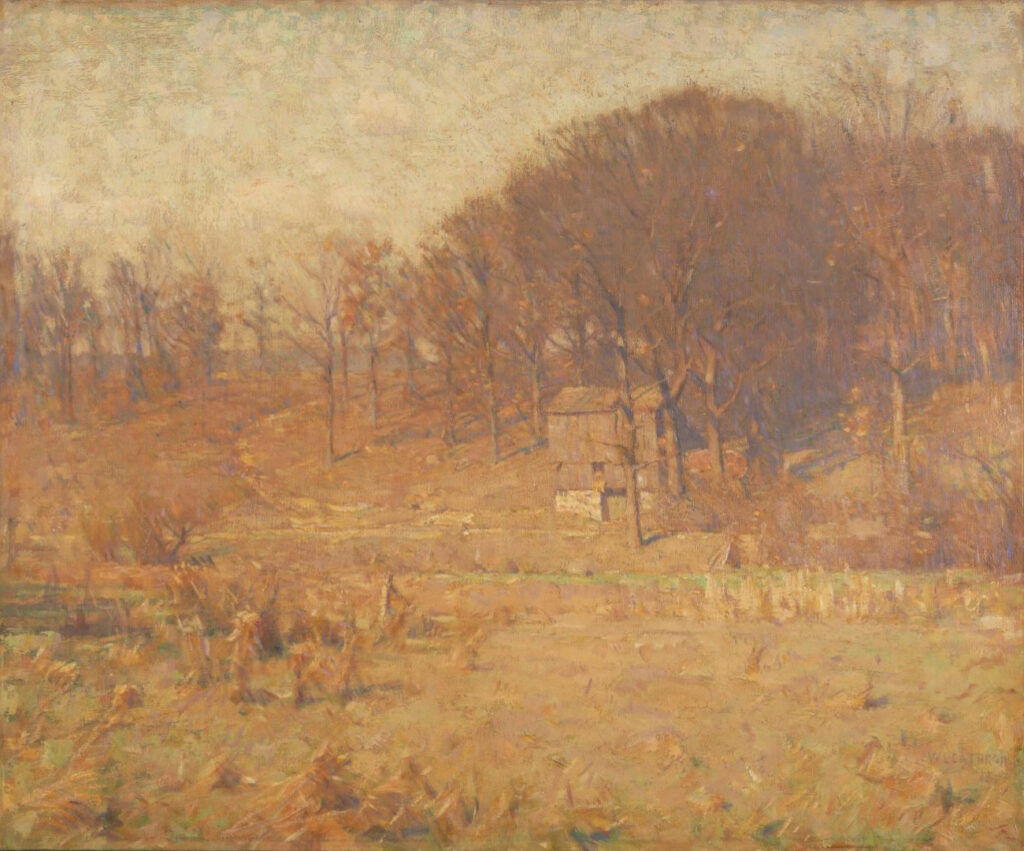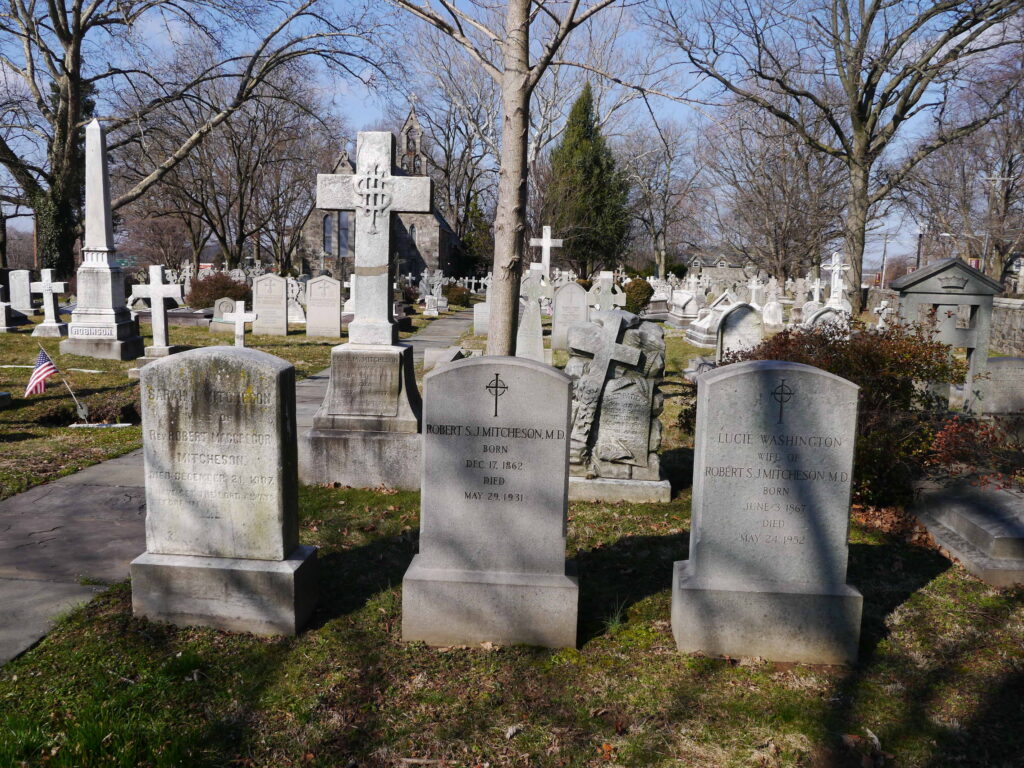Philadelphia physician Robert S.J. Mitcheson (1862-1931) is said to have been a kind, thoughtful person and a good doctor, but his true passion focused on another realm entirely: art. Thanks to his widow’s generosity, it is as an art collector, rather than as a physician, that his legacy endures.
Several years after R.S.J.’s death, Lucie Washington Mitcheson donated some of the best paintings from his collection to the Philadelphia Museum of Art. She didn’t know much about art, but did know that the paintings would serve as a memorial to her beloved husband.

I came across Robert’s name long before I started to research my ancestors in a serious way. I knew my Mitcheson ancestors lived in Philadelphia in the 19th century, so I asked a researcher at the Historical Society of Pennsylvania (HSP) to look up the family. But Philadelphia, which had been founded in 1682, was home to many well-respected colonial and revolutionary families. The Mitchesons came to Philadelphia from England around 1817, so they were not included in any American genealogies. Thanks to Lucie Washington’s ancestry, however, the researcher did find Robert S.J. Mitcheson mentioned in a book about colonial families,1 and it mentioned both his medical career and interest in art.
Robert S.J. Mitcheson was the only son of Episcopal clergyman Robert MacGregor Mitcheson, (1818-1877) and Sarah Johnson (1823-1907). He had two older sisters: Fanny Mary Mitcheson (1851-1937), who married Uselma Clarke Smith and had five children, and Helen Patience Mitcheson (1854-1885), who died unmarried.
His father died when R.S.J. was 15. In his will,2 Reverend Mitcheson expressed the wish that his son study for a profession rather than go into business. R.S.J. attended the Philadelphia College of Pharmacy, graduating in 1885, and worked in the wholesale and retail drug business for several years. He then studied medicine at the University of Pennsylvania, graduating in 1891, and opened a medical practice, specializing in the ear, nose and throat. He also taught at the university.
He married Lucie May Washington (1867-1952) in Philadelphia in 1894 with Lucie’s father, Reverend Shadrach Washington, officiating at the wedding. The couple had no children and lived for many years in a row house on North 15th Street, first with Robert’s mother, then with Lucie’s.
Even as a medical student, Robert was interested in art, and he purchased a large number of paintings over the years. When he died suddenly at age 69, he left the collection in Lucie’s hands.
At first, she was not sure what to do with the paintings, but with the help of R.S.J.’s nephew, Chicago architect William Jones Smith, Lucie arranged to donate ten oil paintings to the Philadelphia Museum of Art. William was a friend of the museum’s director, Fiske Kimball. Kimball chose the paintings he wanted — primarily landscapes done by 19th-century American artists — and they arrived at their new home in October, 1938. At the time, the museum’s vast neoclassical building (familiar to many from a scene on the front steps in the movie Rocky) was only ten years old, and many of its walls were still bare.

A flurry of correspondence between Lucie and museum staff reveals that everyone was happy about the gift. The paintings were hung together for a month in the newly furnished board room before being put on public display. Lucie was invited to come to see them, and to become a patron of the museum. Thrilled, she admitted she had once thought of museums as impersonal places, but “now I shall feel I am really one with you, and anticipate many visits to our Museum.”3
Several years later, she sold a number of paintings and water colours from the collection at auction. By 1946, Lucie must have also sold the house as she had moved into a hotel in the Mount Airy neighbourhood of the city. Her health was declining, nevertheless, she continued to correspond with museum director Kimball. That year she wrote, “It nearly breaks my heart not to be able to accept the many kind invitations that come to me from the museum, and now of all things to miss the Xmas party is the last straw.”4
The final entry in the museum’s file of correspondence with Lucie W. Mitcheson is a note to the museum director, informing him of her death on May 24, 1952.

Notes and Sources
Dr. Robert S.J. Mitcheson photo courtesy of University of Pennsylvania Alumni Office
1. Wilfred Jordan, editor. Colonial and Revolutionary Families of Pennsylvania; Genealogical and Personal Memoirs. New series. New York: Lewis Historical Publishing Company, Inc., 1942, p. 507. The author noted that, “according to family history,” Robert S.J. Mitcheson was a descendant of Richard Stockton, signer for New Jersey of the Declaration of Independence. That would have greatly improved Robert’s social status in Philadelphia, however, I have been unable find evidence of a connection.
2. Robert McGregor Mitcheson, Nov. 30, 1877, City of Philadelphia Register of Wills Office, #895. Familysearch.org, Wills, 1682-1916, Index to Wills, 1682-1924, film #07726523; Wills, V. 90-91, 1877-1878, image #390.
3. Lucie W. Mitcheson, Dec. 16, 1938, General Correspondence and related material, 1938-1939, Philadelphia Museum of Art, Library and Archives.
4 Lucie W. Mitcheson, Nov. 30, 1946, General Correspondence and related material, 1945-1946, Philadelphia Museum of Art, Library and Archives.
This article was also posted on https://genealogyensemble.com on Dec. 8, 2021.

